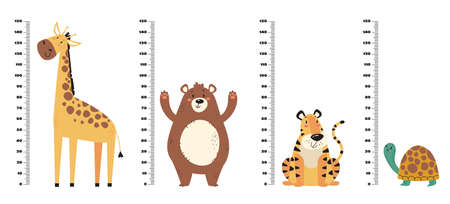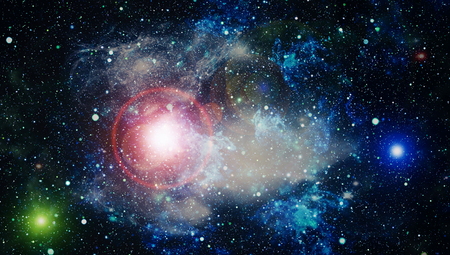1. Setting the Scene: Mists, Megaliths, and Misreading the Stars
Welcome to ancient Britain, where the air was thick with mystery (and probably midges), and the landscape was basically one giant Instagram filter before filters were even a thing. Picture this: you’re trudging through a fog-drenched field, Stonehenge looming like the world’s weirdest IKEA project in the distance, and every other person you meet is convinced that a twinkling star might just be trying to communicate next week’s weather—or perhaps whether their sheep will finally stop wandering off. The ancient Britons, bless their woolly socks, lived in a world where magic wasn’t something out of Harry Potter but an everyday survival strategy. It’s no wonder they started glancing up at the night sky for hints about harvests, love lives, or simply whether Orion’s Belt was trending in prehistoric fashion circles. If you thought checking your horoscope in the morning was a modern obsession, think again; these misty megalith-builders were already reading cosmic signals—albeit with fewer emojis and slightly more animal bones.
2. Stonehenge and the Celestial Queue: Early British Stargazing
If you ever thought the British obsession with queues began at the local post office, think again. It all started at Stonehenge, where our ancient ancestors lined up rocks instead of people—presumably because they were easier to manage and less likely to complain about the weather. Long before astrology apps or suspiciously accurate horoscopes in the tabloids, the Brits were already busy watching the skies, one megalith at a time.
Stonehenge isn’t just an iconic backdrop for summer solstice selfies; it was basically the OG British observatory. Forget telescopes—these folks had stones bigger than your Aunt Edna’s garden shed, arranged in a circle so precise even modern engineers might have a mild existential crisis. Whether it was used as a sophisticated calendar or simply as a mind-bogglingly confusing spot for Bronze Age barbecues is still hotly debated (mainly by people who enjoy wearing tweed blazers).
What Did Stonehenge Actually Do?
| Possible Purpose | Modern Equivalent | Plausibility (1-5) |
|---|---|---|
| Astronomical Observatory | Greenwich Observatory | 5 |
| Mega Calendar | Google Calendar | 4 |
| Pagan Party Venue | Glastonbury Festival | 3 |
| Picnic Spot (Confusing) | Any British park on Bank Holiday | 2 |
| Ancient Stone IKEA | IKEA Croydon | 1 (unless you get lost in both) |
The Art of Ancient Stargazing: Rain or Shine (Usually Rain)
The early Britons didn’t let a little drizzle ruin their cosmic calculations. Legend has it, if you could spot Sirius through three layers of fog and two sheep, you were basically a Druidic influencer. These celestial pioneers would gather at Stonehenge during solstices, tracking the sun’s movements to mark seasons—and possibly when to swap out their winter woollies.
The Lasting Legacy: Why It Still Matters (and Confuses Tourists)
So next time someone claims astrology is all starry-eyed nonsense, remind them that it’s practically woven into Britain’s ancient heritage—right alongside tea drinking and complaining about train delays. Stonehenge stands as a monument not only to prehistoric engineering but also to humanity’s eternal desire to make sense of the universe, whether by mapping the stars or simply finding somewhere dry to sit.

3. Druids, Divinations, and Tea Leaves
If you think astrology in Britain started with hipsters reading their horoscopes over a flat white, think again. The ancient Druids were the original influencers—robes flowing, beards billowing, and haircuts so avant-garde they’d make a Shoreditch barber weep. Long before zodiac memes clogged your Instagram feed, these mystical folks were taking ‘mystic’ to new heights (and possibly new forests). Armed with nothing but their wits, a suspicious number of wooden sticks, and an affinity for cryptic mumbling, the Druids set about interpreting the world through signs, omens, and whatever happened to fall out of a raven’s nest.
These proto-astrologers didn’t have access to glossy magazines or astrology apps; no, they relied on the raw power of nature itself. Need guidance? Consult an oak tree! Want to know if your sheep will thrive? Ask the mistletoe! From peering into pools of water to deciphering the patterns left by spilt tea leaves (a practice that predates your nan’s afternoon cuppa), the Druids believed the universe had opinions on everything—from harvests to hairstyles.
Of course, not everyone was convinced by these leafy prognosticators. Some villagers probably thought the whole thing was as daft as Morris dancing in November. But whether you saw them as wise sages or just blokes who talked to trees, one thing was clear: the Druids laid down some serious roots for British mysticism. They made divination fashionable centuries before anyone dreamt up Aquarius memes or started blaming Mercury for their bad decisions. In short, if you’ve ever checked your star sign before leaving the house in wellies, you’ve got these ancient Britons—and perhaps their questionable grooming habits—to thank.
4. Roman Invasions and Imported Zodiacs
Picture this: Ancient Britain, all misty moors, standing stones, and locals whose greatest concern was whether it would rain for the next 1,000 years. Then—boom!—the Romans arrive, strutting in with their impeccably draped togas and a penchant for introducing civilisation whether you asked for it or not. Among their many cultural imports (roads, baths, sensible sandals), they also brought astrology—because what better way to distract the locals from conquest than by asking them if they’re a Gemini?
Let’s be honest: prior to the Roman arrival, your average Briton’s knowledge of the stars probably didn’t extend much beyond “that one looks a bit like a sheep.” The Romans, however, came armed with charts, horoscopes, and an impressive ability to make star-gazing seem both mystical and suspiciously bureaucratic. Suddenly, British banter wasn’t just about the weather—it included heated debates about Mercury retrograde and whether being born under Mars made you more likely to invade Gaul.
How Roman Zodiacs Changed British Small Talk
| Before Rome | After Rome |
|---|---|
| “Nice sheep. Do you think it’ll rain?” | “Nice toga. Are you a Sagittarius or just naturally confident?” |
| Local folklore about moon phases | Bespoke horoscopes tailored to your birth hour (assuming you owned a sundial) |
| Stone circles for rituals | Stone circles for pondering why Scorpios are so intense |
The Ripple Effect on British Culture
The introduction of zodiac signs didn’t just change dinner party conversation; it laid the groundwork for centuries of awkward first dates and pub quizzes where someone inevitably asks if your rising sign explains why you never buy your round. Astrology went from being an exotic import to an indispensable part of British identity—right up there with queueing and apologising when someone else steps on your foot.
Legacy of Roman Astrological Influence
If you’ve ever blamed Mercury retrograde for missing the last train to Clapham or wondered if your mate’s Taurus stubbornness is why he won’t switch footie teams, thank those starry-eyed Romans. Their celestial obsession paved the cosmic way for Britain’s love affair with horoscopes—an affair that continues every time someone checks if Venus is in Pret-a-Manger.
5. From Superstition to Scones: Astrology in Everyday Ancient Life
If you thought astrology was just for mysterious druids in foggy cloaks, think again. In ancient Britain, celestial predictions were as woven into daily life as a good cuppa and a drizzle of rain.
The Cosmic Crop Rotation Conundrum
Forget modern farming guides—ancient Britons looked skyward for all their agricultural needs. Saturn in retrograde? Best not to plant your barley or you might end up with more weeds than wheat. If Venus was showing off, it was time to harvest—because, obviously, nothing says “bumper crop” like a planet named after love. It’s almost as if the stars themselves were the original farm influencers, long before social media made it cool.
Marital Bliss by Moonlight
Weddings weren’t just planned around whether Aunt Mildred could make the journey; they were scheduled according to lunar cycles and planetary alignments. Because if Mercury was feeling mischievous, you could expect more than forgotten vows—perhaps a runaway bride or two. And who wouldn’t want Mars blessing their nuptials with a dash of passion (or perhaps just an extra rowdy ceilidh)?
The Kettle Question: Tea Time According to the Stars
You might laugh, but there’s evidence our ancestors consulted the heavens for everything—even when to put the kettle on. Was Jupiter rising? That was clearly a sign for a strong brew and maybe an extra biscuit (astrology-approved, of course). If Mercury was in retrograde, best stick with herbal tea—no one wanted cosmic interference in their Earl Grey.
Scones and Superstitions: The Edible Zodiac
Baking wasn’t spared from celestial meddling either. Some believed certain star alignments made scones fluffier, while others swore by planetary positions for jam distribution. It’s unclear whether this resulted in better pastries or simply gave everyone something to blame when the cream slid off.
In sum, astrology in ancient Britain wasn’t just about grand temples or star-gazing philosophers; it was embedded in every soggy field and bustling kitchen. Whether it actually worked or just gave people something to gossip about over tea is still up for debate—but let’s be honest, even now we’re tempted to blame a bad day on Mercury being in retrograde.
6. Legacy, Lore, and Lasting Laughs
Let’s face it: astrology in ancient Britain wasn’t just about peering at the stars with druidic gravitas—it was also about making sense of sheep, stones, and suspiciously unpredictable weather. Fast-forward a few millennia, and the British talent for mixing tradition with tongue-in-cheek humour means our astrological roots are never far from the surface (or the front page of the tabloids). Whether you’re consulting your horoscope to see if you should finally text your ex (again), or blaming Mercury retrograde for missing the 8:07 to Waterloo, you’re participating in a time-honoured tradition that’s as British as discussing the weather over a cuppa.
Astrology has wriggled its way into every cranny of UK culture. Attend a solstice rave at Avebury and you’ll spot festival-goers debating their rising signs between sips of suspiciously herbal cider. Tabloid astrologers like Mystic Meg have become household names, dispensing cosmic wisdom with a wink and a nudge. Even politicians aren’t immune—just wait until someone blames a parliamentary gaffe on “Saturn being in opposition.”
This enduring fascination is more than nostalgia—it’s folklore evolving in real time, with every meme about star signs and every Instagram post that declares “I can’t help it, I’m a Gemini.” The ancient Britons might not have had smartphones, but rest assured, they’d have been all over astrology apps if they did (imagine Stonehenge with Wi-Fi!).
So next time you check your star chart before job interviews or refuse to leave the house because Venus is “throwing shade,” remember: you’re keeping alive an eccentric legacy that began long before horoscopes became column fodder. In Britain, astrology’s early quirks have never really gone out of style—they’ve just traded stone circles for social circles, and auguries for algorithms.
In summary, from Avebury to Abbey Road, astrology’s roots continue to sprout wildflowers—and maybe even a few giggles—across the landscape of British culture. So raise a glass (or a crystal) to our cosmic heritage; after all, when it comes to stargazing and self-deprecating humour, nobody does it quite like the Brits.


